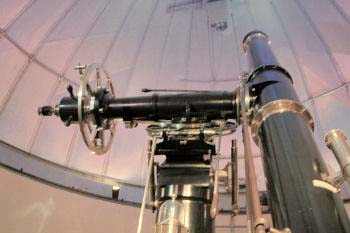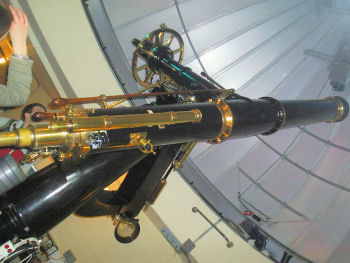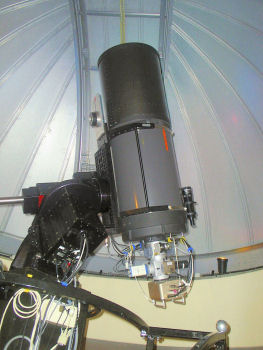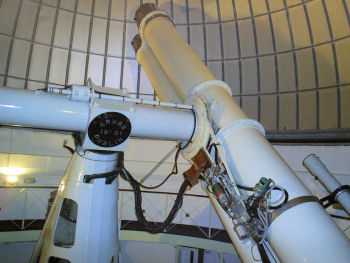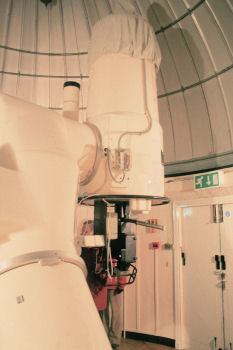2007 Visit to Mill Hill
Visit to Mill Hill Observatory – 2007
On Saturday February 10th 24 of our members had a very enjoyable visit to the Mill Hill Observatory. This is the observatory of London University, and is the best-equipped teaching observatory in the UK. We were led on our tour by the director Mike Dworetsky and two very knowledgeable students, Mckenzie and Deborah.
Mike explained to us that even though the observatory is located close to a busy main road, excellent insulation in the construction of the buildings and first-class and efficient down-lit street lights installed with the cooperation of the council make it a good observing site. The telescopes themselves are mounted on pedestals anchored to the bedrock, making them virtually immune to traffic vibration.
We first visited the telescopes of the Southern Group, housed in a triple-domed observatory building. The main telescope here was the superb 8″ Fry refractor, named after the benefactor who donated the instrument to Mill Hill in 1930. This F15.75 telescope was made by Thomas Cooke and Sons in 1862, and is very accurately polar-aligned (within one second of arc). It has a weight-driven RA drive, and can be equipped with a video camera using a 250-frame integrating software to display the image on a video screen. The instrument is particularly well suited to planetary and solar viewing.
Another view of the Fry refractor
We also looked at the Celestron C14, linked to a go-to system using the Software Bisque planetarium software. The eyepiece mount can be switched between regular eyepieces, a CCD camera or a TV camera, and another CCD is used for guiding. A separate web-cam is used to monitor the position of the dome slot, to ensure that it is correctly aligned with the telescope. The third instrument in the triple dome is a 10″ Meade.
We then moved to the dome housing the magnificent twin telescopes of the Radcliffe refractor (24″ and 18″). The instrument dates from 1901, and was equipped with a computerized control system in 1991. The telescope is manually moved to the vicinity of the object to be observed, and shaft-encoders are used to inform the computer of the current telescope coordinates. Slow-motion drives then centre the object of interest. This system was of particular interest to us, in relation to our own (rather more modest!) plans to upgrade the drive of our own 14″ telescope
Another view of the twin telescopes.
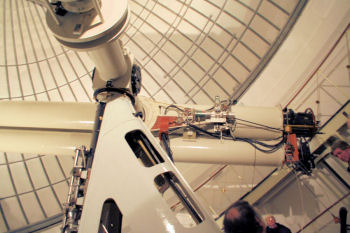
The original instrument in the last dome to be visited belonged to the pioneering astro-photographer Edward Wilson, and was donated to the University of London for the founding of the Mill Hill observatory. The present 24″ Allen reflector is a Richley-Chretien instrument by Ealing Beck, on a German mount. This is a Cassegrain reflector, with no corrector plate, and is fitted with a spectrograph and CCD allowing quantitative study of planets, stars and nebulae (for analysis of elemental composition, radial velocities and rotation rates).
Altogether a thoroughly enjoyable evening, and some of us may even be tempted to enrol on the evening classes on astronomy run by UCL, if only to have the privilege of using some of the instruments at Mill Hill!
Text by Graham Marett, images by Allan Swan & Pat Walker
Follow this link for the UCL observatory website
